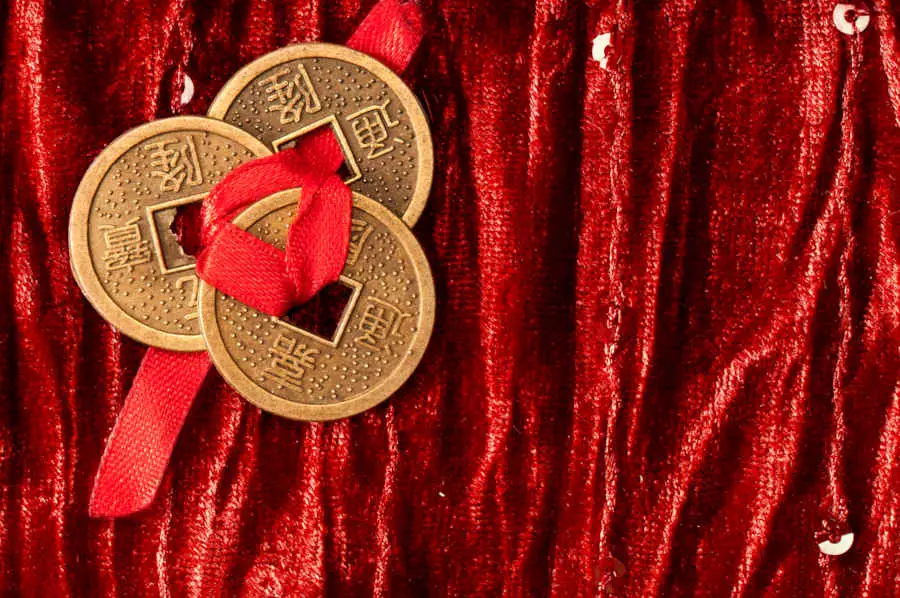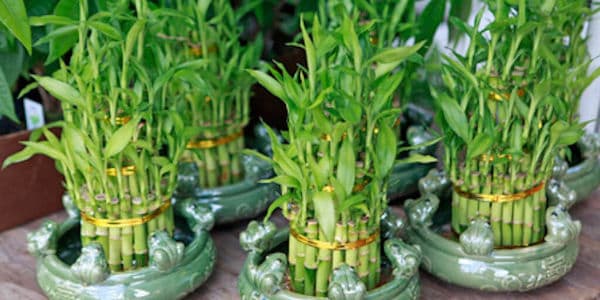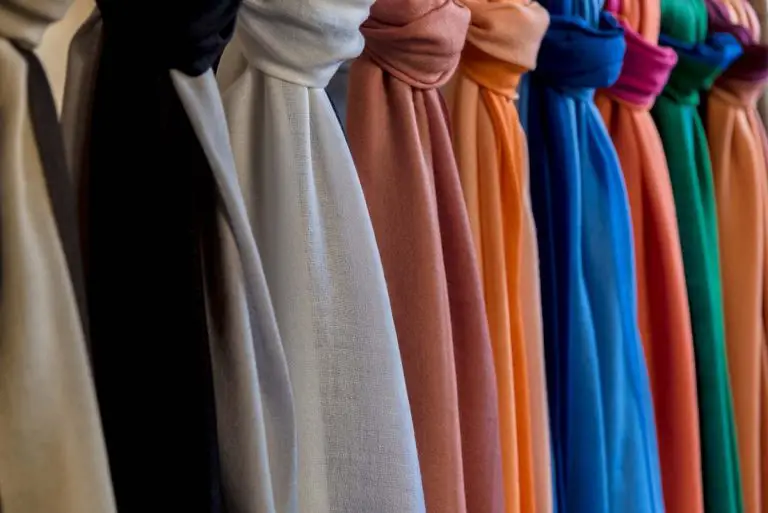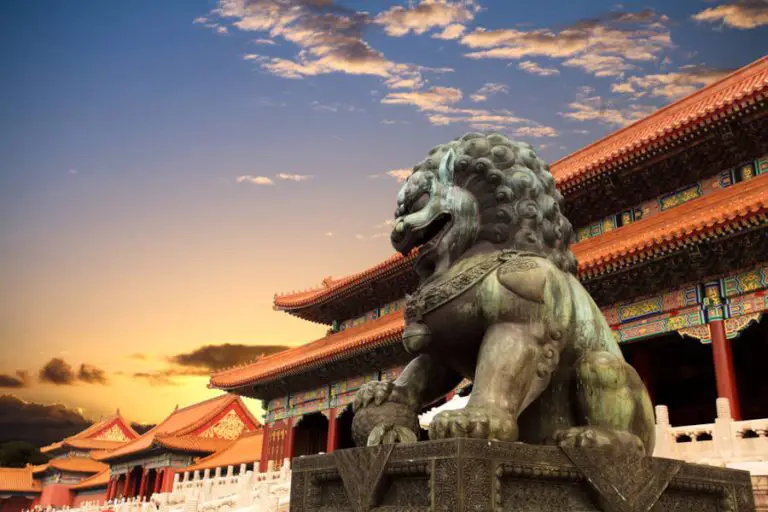Feng Shui, as we know, is the Chinese’s own branch of astrology and cosmology that is very important in Chinese culture, even until today.
The Chinese lucky coins, on the other hand, are a very important lucky charm under Chinese Feng Shui, just like the famous Laughing Buddha. The Chinese lucky coins are considered to be a symbol of wealth and fortune, and when placed in our home and workplace according to the Feng Shui principles, it is believed that the owner will enjoy prosperity.
Identifying Chinese Coins: The Basics
As we know, Chinese coins come with different Chinese characters and symbols on them, which might look confusing for beginners. However, the good news is there aren’t actually that many different characters and symbols used, so with just a bit of research you should be able to properly identify any Chinese lucky coin.
Once you’ve successfully identified a few Chinese coins, you will start recognizing the common characters used on these coins.
What do the characters mean? First, remember that Chinese characters are read from right to left, so when there are only two characters on the coin, read the right character first and then the left.
Most coins have four characters on the front/face/obverse side, but some older coins have two characters. The rear/tail/reverse side of the coin typically has no characters at all (and we call these coins plain reverse’), but in rare cases, some coins might have two characters on the reverse side. In even rarer cases, some coins have dots or crescents on their reverse sides.
The larger the coin, the bigger the value. Some larger coins have four characters in their reverse sides, which will indicate the value of the coin.
With four-character coins, an important rule is to read the top character first, followed by the bottom, the right, and finally the left (Top-Bottom-Right-Left). There are rare cases when the coins should be read in a clockwise direction (Top-Right-Bottom-Left), and you can identify these coins with their bottom characters:
- 涌 T’ung or Tung meaning “current”
- yuán, meaning “round object” or “round coin”
- 重 zhòng or chung meaning “heavy”
Face/obverse characters: if there are two characters on the face/obverse side of the coin, it usually symbolizes the value of the coin (but not always). In a four-character coin, the first two characters read (top and bottom or top and right) are the titles of the emperor publishing of the coin, followed by the type of coin.
Reverse characters: it’s rare, but when a coin has characters on the reverse/tail side of the coin, it almost always says where the coin was made.
Take a look at these “Lucky Chinese emperor Coins” designs – Aff.link.
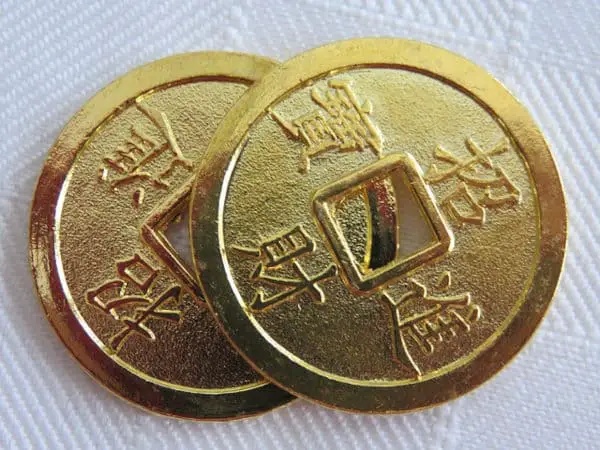
Feng Shui Symbols
Here are some common character combinations in Chinese lucky coins that are commonly used in Feng Shui applications, and their meaning:
- Coins with four characters on one side, typically Bao, Chuen, Yong, Fu, symbolizes longevity and prosperity
- Eight characters on the reverse side (Fu Zhai Yien Chien, Re Re Sheng Chai) meaning “good fortune ahead, wealth multiplies every day”
- Coins featuring the 12 animal signs of the Chinese zodiac and eight Bagua (Pa Kua) trigrams, symbolizes protection for loved ones. This type of Chinese lucky coin is often hung from an interior doorknob, believed to protect the house from evil forces.
- Coins from the Ching Dynasty typically include the characters Tien Xia Tai Ping, meaning “peace on Earth”, so they generally symbolize peace, protection, and prosperity.
Related reading: “Chinese Good Luck Charms To Bring Good Fortune” –Opens in new tab
Applications of Chinese Lucky Coins in Feng Shui
Chinese lucky coins are often used as a “money cure” in Feng Shui applications, to improve the owner’s money luck or to help them recover from recent bad luck.
To do this, first, locate the money area of your home. You can then place the Chinese lucky coin (or coins) in this area while considering blending them with your home decor. For example, you can frame these coins, or you can simply hang them on your doorknob or above your door.
An important thing to consider is that you don’t have to display the coin in plain view. If you want, you can have it hidden as it won’t affect its performance as a money cure. So, for example, you can have a Chinese coin inside your desk drawer. Yet, in such applications, make sure your drawer is clean and organized.
Another popular way to use the Chinese lucky coins is to simply carry them in your wallet or in your pocket. Many people who practice Feng Shui carry 3 lucky coins tied with a red-colored ribbon in their pocket or wallet.
If you own a business, there are various ways to use the Chinese lucky coins according to the classic Feng Shui rules. For instance, you can tie the coin (with a red ribbon) near the cash register, inside your business’s front door, in your drawer together with your financial statement papers, near the phone, or any other place that is important for your business.
Alternatively, you can also use the Chinese coins in various pieces of jewelry from bracelets, pendants/necklaces, and earrings.
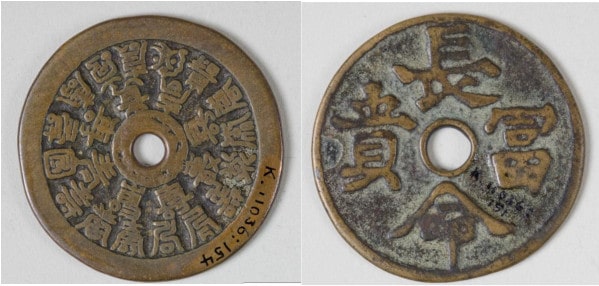
How To Tie The Knots on Chinese Coins
A very special configuration in Feng Shui is to tie three Chinese lucky coins together with a red string. This symbolizes a great fortune of wealth in Feng Shui.
Here are the steps you can do to create this lucky configuration:
Step 1: thread the three coins together on the string, then bend the string in half (the same length for each half) to create a U-shape.
Step 2: twist the string so that the bottom of the U-shape makes a full loop with one coin in it. Hold this loop with one hand, and then create a second similar loop next to it with your other hand. This loop should have the second coin in it.
Step 3: hold these two loops in place with one hand, and repeat the above step to create the third loop (with the third coin in it) with your other hand.
Step 4: hold all three loops with your left hand, take the left end of the string then pass it over to the right end. Pass the end under, then up through the right loop.
Step 5: pass the middle of the right end of the string through the center loop, you should create a new loop this way.
Step 6: pass the middle of the left end of the whole string, go through the center loop, then go under and through the newly-created new loop.
Step 7: pull the end of the string through the loop and complete the knot.
Feng Shui Diploma Course
- Certified Course
- Accredited Course
COURSE INFORMATION
- 10 Modules
- Lifetime Access
- Study Group Access
Use “LIGHTWARRIORSLEGION466 ” code for 70% off.
Feng Shui Coins Configurations- Meaning and Symbolization
In Feng Shui applications, the configurations of the Chinese lucky coins are mainly determined by the number of coins in the configuration, each with its own unique meaning and symbolization, as you can see below:
- 3-coin configuration: three for the Chinese luck trinity: heaven luck, earth luck, and man luck. Believed to attract wealth, fortune and promotes prosperity.
- 5-coin configuration: protection against harm and danger, while also attracting wealth for the owner. Five symbolize the five Feng Shui elements (fire, water, earth, wood, and metal), and the inclusion of all five has the purpose of creating balance and harmony
- 6-coin configuration: six is considered a lucky number in Chinese culture since it symbolizes heavenly luck. Believed to attract support from others and your higher-ups in the workplace
- 8-coin configuration: 8 is considered the luckiest number in Feng Shui, representing abundance and prosperity luck.
- 9-coin configuration: 9 symbolizes the unity between heaven and earth, so the 9-coin tassel is believed to bring the owner protection from harm and great fortune
- 10-coin configuration: 10 coins strung together are believed to bring wealth, fortune, fame, and success in all aspects of life.
Take a look at these “Lucky Chinese emperor Coins” designs – Aff.link.
Best Placements for Feng Shui Coins
Generally, the Chinese lucky coin should be placed in the area that is directly related to your income (where the money comes in), both in your home and in your office/business.
It’s important to note that you should place the coin in the place with the “inflow” of money and not when your money is stored. For example, if you are a designer, then most of your business has to do with your drawing board and/or your laptop, for example. In this case, you can place a Chinese feng shui coin (or a configuration) near your laptop.
With this principle in mind, here are some examples of where you should place your Chinese lucky coins:
- In your wallet: a basic application, placing the coin in your wallet is believed to attract more of what you have in your wallet
- Investment records: if you want better returns from your investment, you can place the coin near the papers. If you trade digitally, you can place your coins near your PC/laptop.
- Near the phone: if your business involves calling people (i.e. direct selling), you can place coins near the phone (or on it)
- Cash register: for brick-and-mortar businesses like restaurants.
- Water fountain: if you have a water fountain in your house, you can place a 6-coin configuration in the mountain for prosperity
- Chair: placing a coin or coins under your chair can energize your workplace.
🍀 Our “Feng Shui Master” app is your trusted companion, offering a useful guide to implementing Feng Shui principles. Try it now!
Stay in Touch
 Join our newsletter by using the forms on this website or click here!
Join our newsletter by using the forms on this website or click here! Follow us on Google News
Follow us on Google News Follow us on Facebook
Follow us on Facebook
Feature Image from Depositphotos

